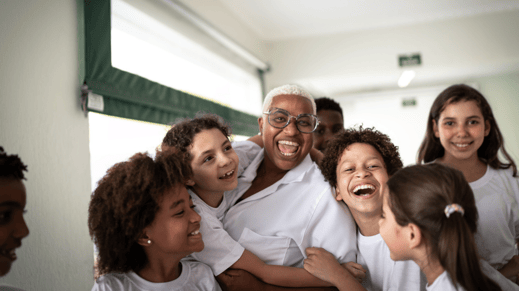
“What I think I’m most proud of as a professional in the field is our ability to show up, our ability to still do it, to still roll with the changes… We have to adjust. That is what educators did the entire year. We show up. We have a strong why. We love what we do.” This is a quote from Colleen Schmit from our recent webinar, Celebrating Great Teaching. She’s talking about how hard the last couple of school years have been for teachers. Teachers faced a similar difficulty 20 years ago when the United States faced a national tragedy.
September 11, 2001
It was my junior year of high school and I was in the middle of chamber singers class. Oddly enough, we were midway through an acappella version of God Bless America when the loudspeaker interrupted us and our principal announced that two airplanes had hit the twin towers. This was especially jarring for a group of kids on Long Island, many of whom had parents and loved ones in Manhattan. We were scared and confused.
Amid this chaos and fear, our teachers transformed into heroes.
Teaching aides and cafeteria staff raided the kitchens and comforted us with snacks and games. Teachers moved from classroom to classroom, escorting students to the office telephone so that we could try to contact loved ones. I remember walking with my drama teacher, who waited with me in those nervous moments when I feared the worst.
My father was one of the lucky ones. He survived the attacks, but was close enough to watch the towers fall from his office building. Some of my friends were not as fortunate. As awful as that day and the following days were, I am filled with gratitude for the security, compassion, and kindness that my teachers provided.
COVID-19
Fast forward 20 years later to a global pandemic. It may be different from what students and teachers experienced on September 11, 2001, but the pandemic is still a shared trauma. Teachers are there for students.
We know high quality interactions can profoundly affect child outcomes and how children process and move through trauma.
Many parents are seeing the important role that teachers play during the pandemic through the eyes of their children right now. For my colleague, Ahna, she saw the important role that teachers play during the pandemic through her daughter, Violet*. As an outgoing eighth-grader, Violet hated remote learning. She missed her friends. Sitting at a computer all day felt isolating, and each day was worse and worse.
But she had a skilled teacher. Ms. Booz taught Language Arts and held Violet accountable for every project.Ms. Booz added regular meetings with Violet to give her more support when she noticed Violet was struggling. One time, Violet even called Ms. Booz at 6 p.m. on a Friday night to talk through a school project. Her teacher took the call and patiently and kindly answered all of Violet’s questions. In fact, even after the semester ended, Ms. Booz continues to be a support for Violet.
Ahna added that she knew Ms. Booz was like this for each student, “She never lost sight of the fact that each child was going through hardship. They missed being around each other. Many of them even lost members of their own families to COVID-19. But, she never stopped showing up—even if it was dinner time on a Friday night.”
The Role of Teachers during Traumatic Events
We know trauma disrupts the way children think and develop. After experiencing a traumatic event, children may act out. They may behave unpredictably or withdraw. That’s why it’s so important for those children to have adults who are there for them no matter what. Interactions are at the heart of healing.
Kristin Valdes said of teachers during our recent webinar, “You might be feeling pulled in many directions, exhausted, but you are still showing up and doing the best you can by those kids.” Thank you to my teachers in 2001 for continuing to show up and support me. And, thank you to today’s teachers who continue to care for the children in their classrooms.
